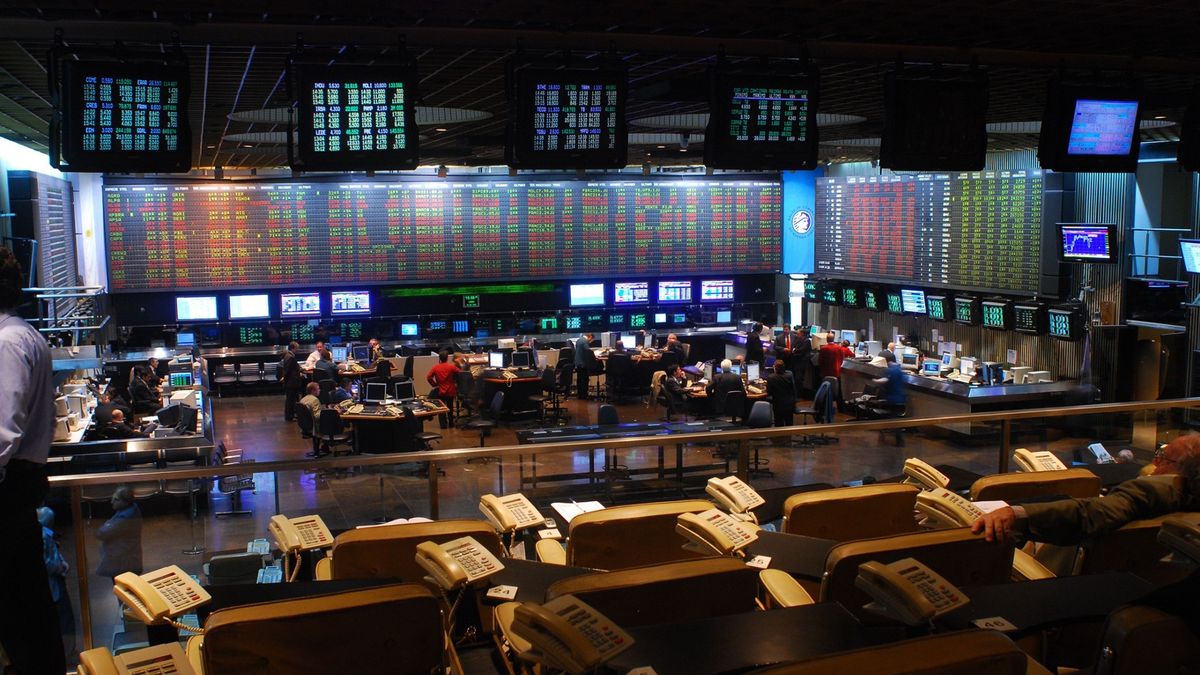In the midst of a negative day for Wall Street, Global bonds registered falls of up to 5.8%, as shown by the collapse of the Global 2041. In addition, the Global 2029 lost 4.6%, and the Global 2025 yielded 1.4%. But there was one exception: Global 2035 rebounded 5.3%.
At the same time, opportunity purchases appeared among the Bonares, which rose to 3.6%, hand in hand with 2035. They climbed to the podium the Bonar 2030 (+3.1%), which managed to break the parity of US$20 during the day, and the Bonar 2029 (+0.6%). “Opportunity buyers appeared at mid-day, to close like this with rises along the curve,” they indicated from SBS.
For his part, Nicolás Rivas, Bavsa trader explained to Ambit that “There was a strong reversal in the bonds in dollars and in the CCL, which came to trade close to $255. There were versions regarding interventions by the BCRA, but I personally don’t think so.” In this regard, he noted that “Whenever the dollar drops, these rumors appear. The truth is that a month ago the CCL was worth $210 and today above $250, perhaps some player has been tempted to take profits, the same as in the bonuses.”
This was how the Argentine country risk, which reached during the day the record of 2,508 basic points, closed with a drop of 0.7% to 2,434 points.
The IMF board recently approved the first revision of the agreement with Argentina for a debt of 44,000 million dollars, allowing a disbursement of about 4,000 million dollars, those that were credited in the reserves of the Central Bank (BCRA) this Tuesday to resume a level of 42,000 million dollars (they reached US$42,139 million in gross terms).
The bond market in pesos again had the participation of official entities such as the BCRA and the pension entity Anses as buyers to try to stop the collapse. Sources from the Central, on the other hand, denied that they have intervened in the curve of bonds in dollars against pesos, as many operators supposed.
Thus, titles in pesos that adjust by CER closed mixed this Tuesday. According to market estimates, the BCRA has already issued almost 550,000 million pesos to support the prices of bonds in pesos.
CER-adjusted debt continued to show demand throughout the Leceres stretch, which gained 0.3% on average. The Bonceres, on the other hand, were somewhat heavier and fell 0.7% on average in the long section.
The president of the Central Bank, Miguel Pesce, promised this Monday to implement as soon as possible a liquidity line for Treasury instruments for use by mutual funds. “We are analyzing different alternatives so that they work as a reassurance that the BCRA will operate on the curve to guarantee the liquidity of Treasury instruments and the support of their prices,” said Pesce.
The head of the Central met with Valentín Galardi, president of the Argentine Chamber of Common Investment Funds (CAFCI) and representatives of the industry, who agreed with the strategy and valued the intervention of the BCRA in the securities market, sources indicated. the monetary authority.
On the other hand, sovereign bonds dollar-linked were ordered in the short section and were flat in the long section, showing good volume again on TV23 (+0.15%).
After the closing of the market, and in the midst of the exchange tension, Economy managed to close a good tender and managed to renew 100% of the maturities, taking some $248,000 million, between Lelites, Ledes, Leceres and TV23 (TV24 was left deserted) .
Of the total financing obtained, 85% corresponded to instruments maturing in 2022 and the remaining 15% to the dollar-linked instrument maturing in 2023. Likewise, 51% of the awarded amount was in CER-adjustable instruments, 34% in fixed-rate instruments, and the remaining 15% in dollar-linked instruments.
In turn, the Treasury offered instruments with a positive real rate for participating investors. In the case of nominal rate instruments (YOU GIVE), the rate awarded implies a differential close to 6 percentage points with respect to the BCRA’s monetary policy rate. In the case of instruments with adjustment CER (LECER) the range of real rates was between 2.5% and 3.3% per year.
“The tender was moderately good. Both the BCRA and Finance seem willing to bank the peso curve with all the artillery. The negative thing is that the outside market is still very turbulent. They continue to hit risky assets, which is negative for Argentina a priori,” warned Rivas.
Meanwhile, the blue dollar jumped another $7 to $239, while the CCL and the MEP jumped to $5.61 (+2.3%) to touch $250 and $243, respectively, after the BCRA board ruled on Monday modifications to the foreign exchange access policy to restrict some operations at a time when the country is facing a significant increase in imports.
Operators estimated that the monetary entity closed the day with a positive balance of about 150 million dollars for its reserves, compared to 250 million on Monday when the restrictive measures were implemented. Market sources let it be known that the demand for the payment of energy imports remained somewhat above 100 million dollars.
S&M Merval and ADRs
For its part, the stock market maintained an upward movement in the face of a new jump in the CCL dollar, which prompted a 2.9% improvement in the leading S&P Merval index, to 88,194.70 points.
The turnover in shares increased 30% to $1,641.8 million. On the main stock board, the strongest advances are scored by the cement company Holcim (+6.9%), the aluminum producer Aluar (+6.4%); Banco Macro (+5.9%); the energy company Transportadora de Gas del Sur (+5.3%); and the electricity company Transener (+5.1%).
While the only decline was experienced by the holding company Pampa Energia (-0.02%), after rising strongly on Monday, due to a favorable recommendation on its ADRs made by Morgan Stanley.
On Wall Street, meanwhile, the ADRs of Argentine companies closed the day with most increases. The strongest gains were recorded Vista Energy (+6%); Macro Bank (+3.2%); and Telecom (+1.6%). Instead, they forcefully lowered the papers of Free Market (-7.6%); IRSA (-4.1%), and Central Puerto (-3.1%).
Source: Ambito
David William is a talented author who has made a name for himself in the world of writing. He is a professional author who writes on a wide range of topics, from general interest to opinion news. David is currently working as a writer at 24 hours worlds where he brings his unique perspective and in-depth research to his articles, making them both informative and engaging.




